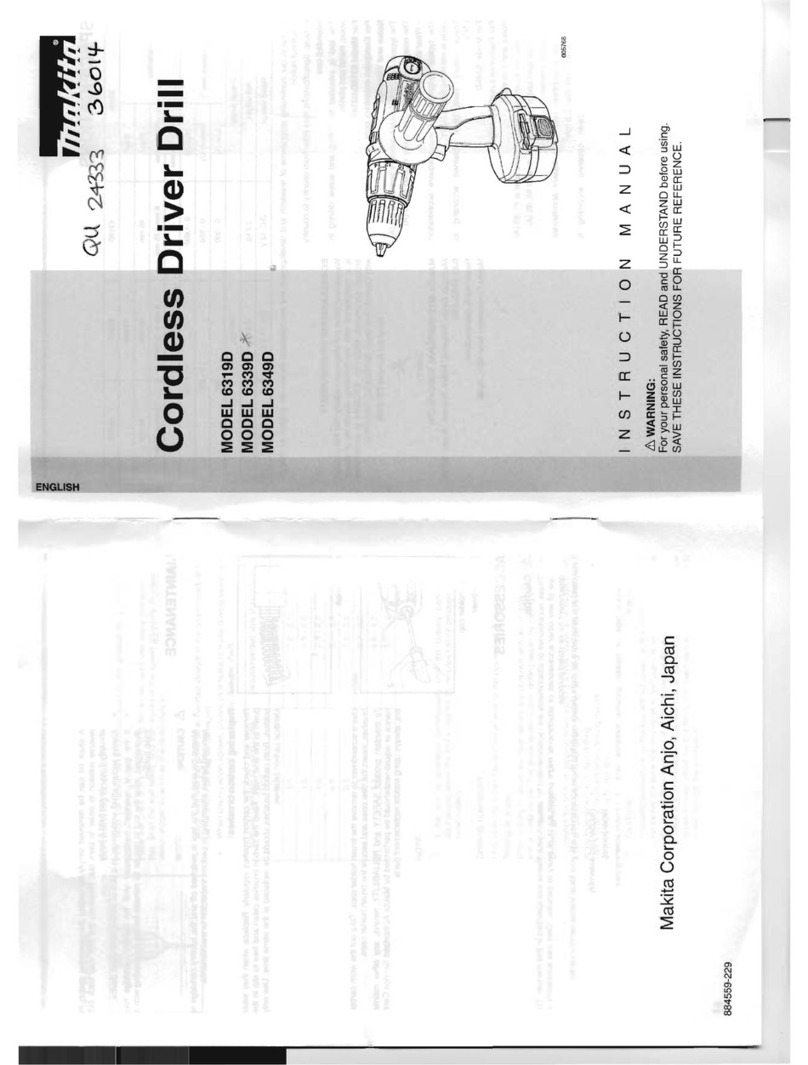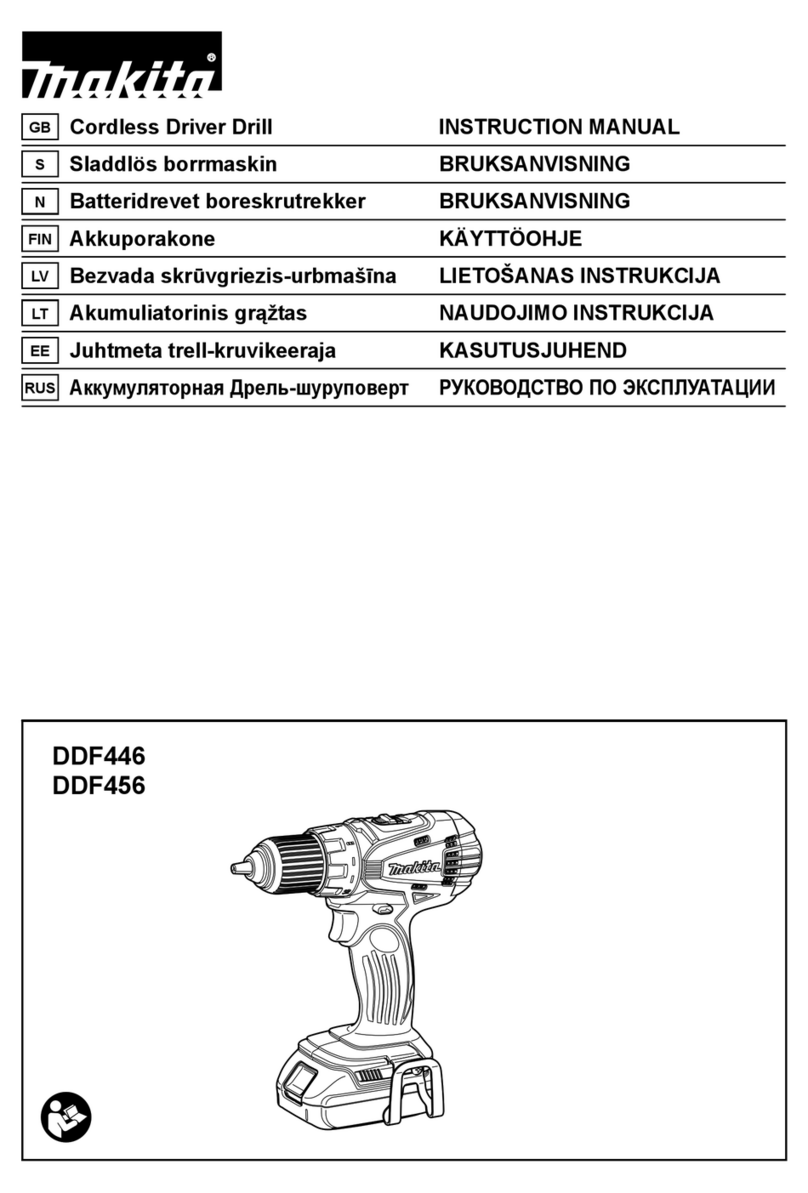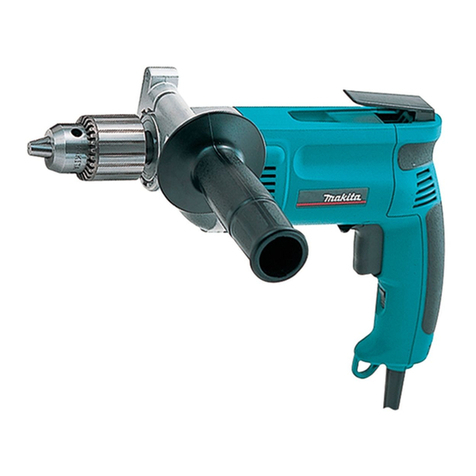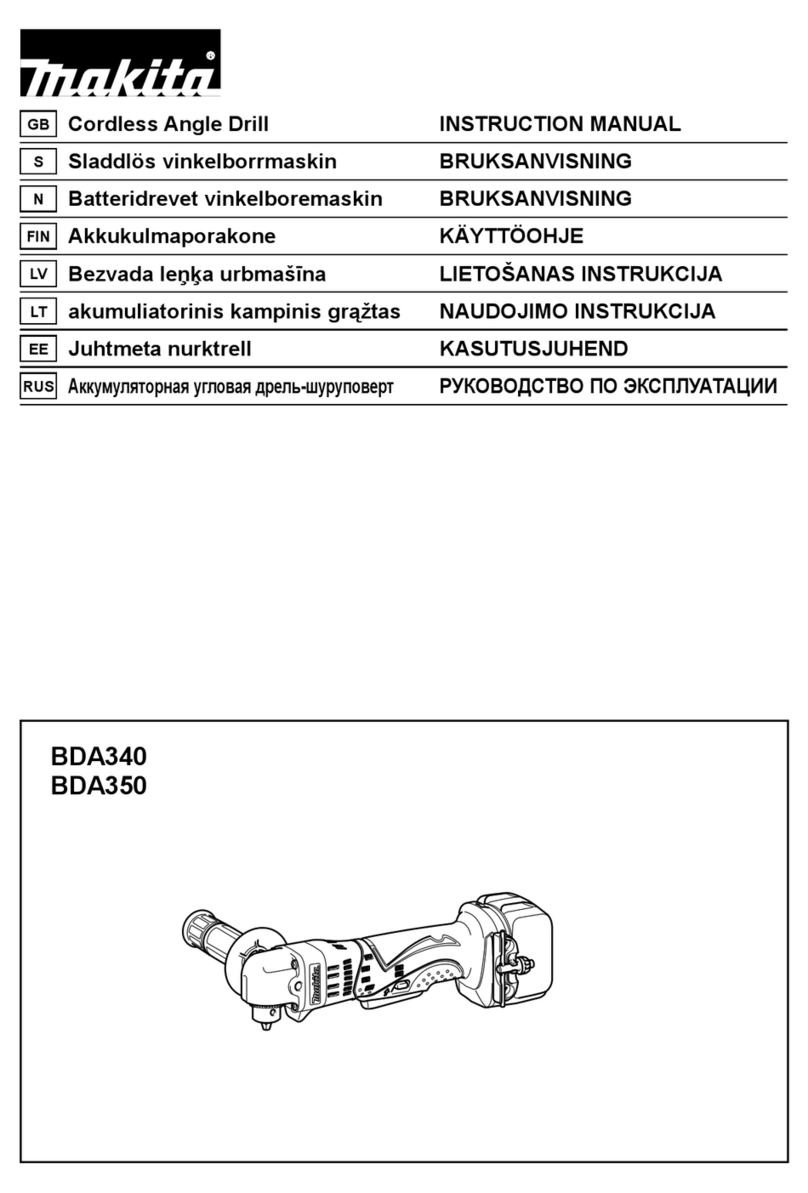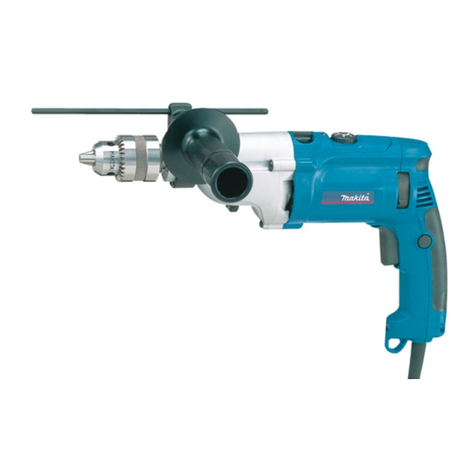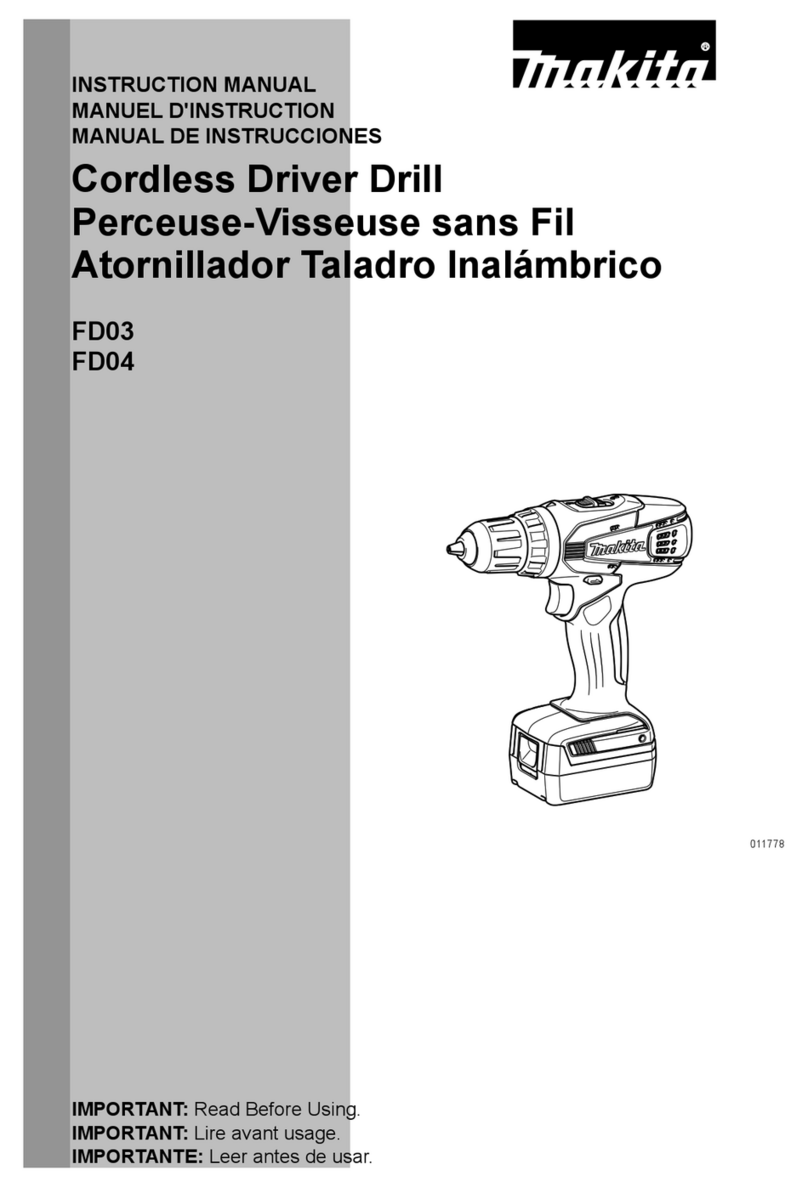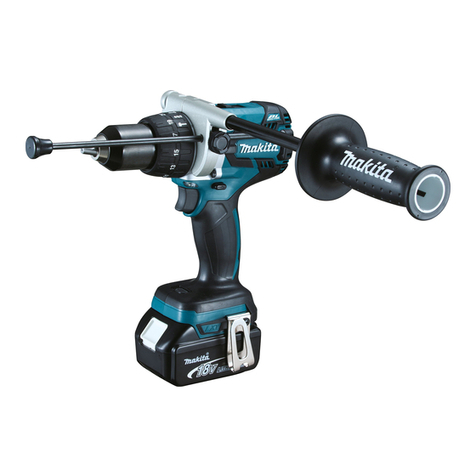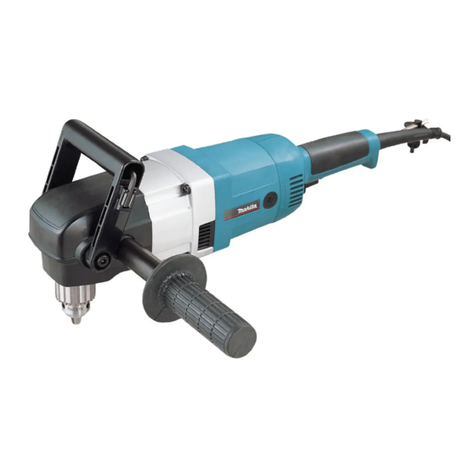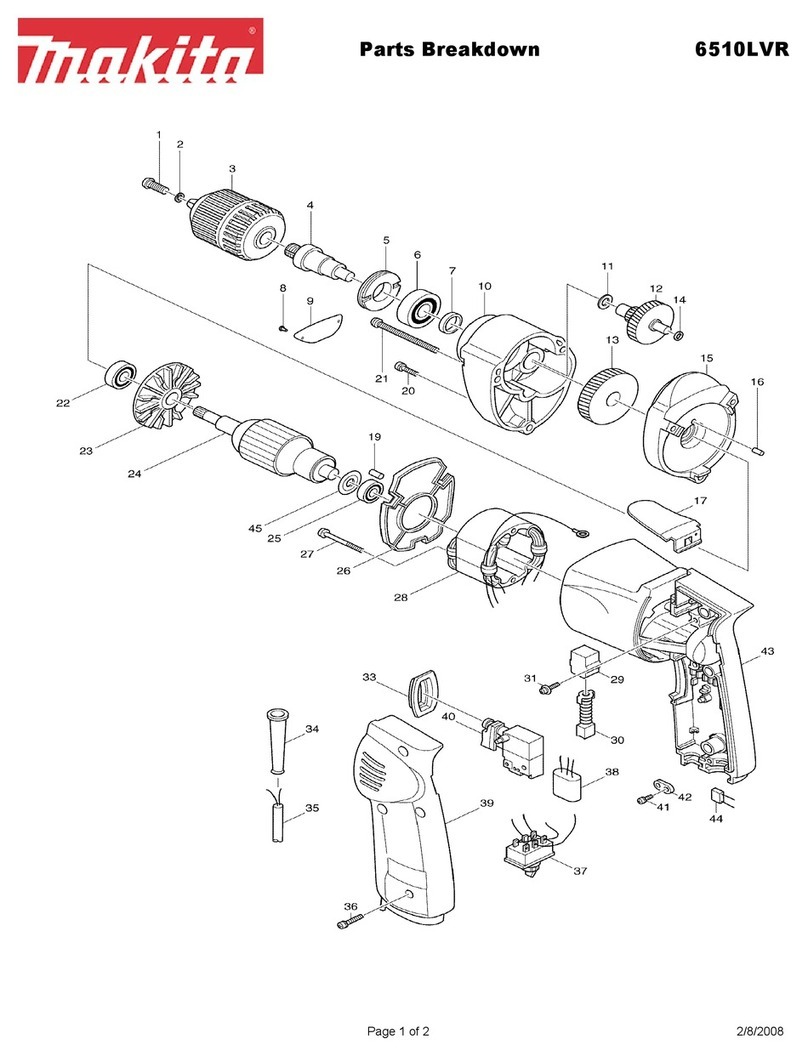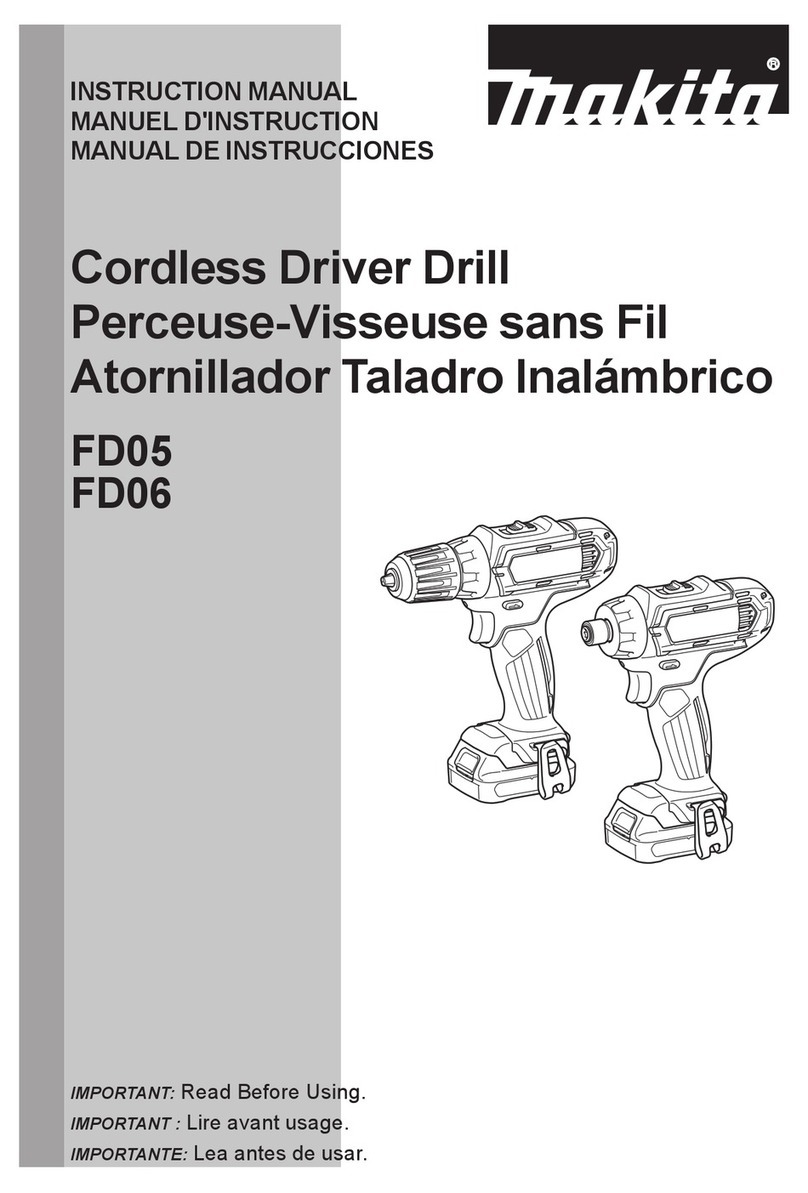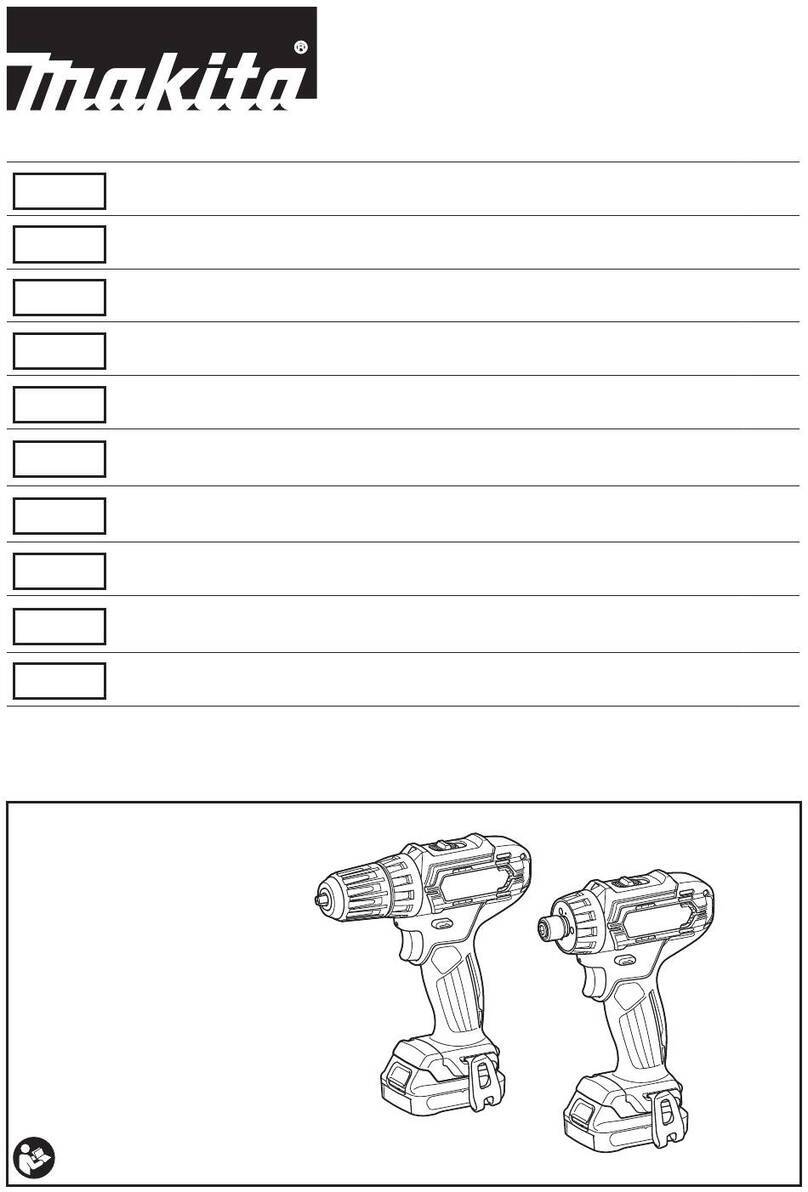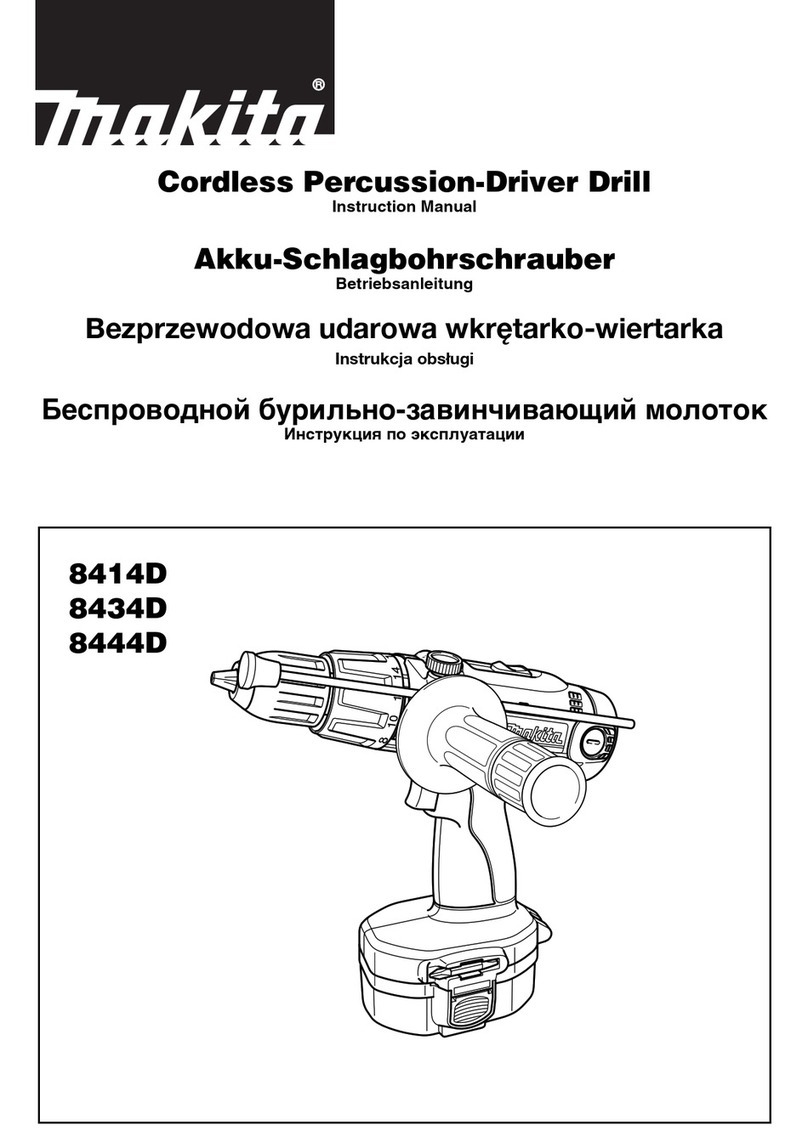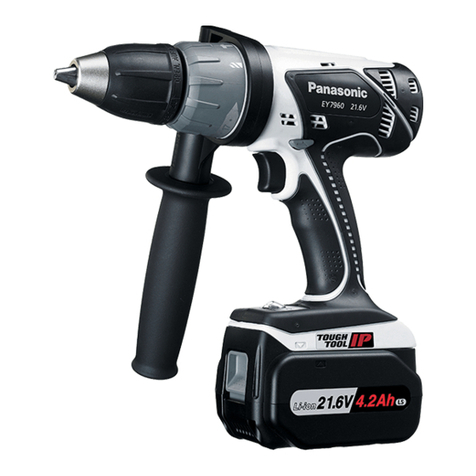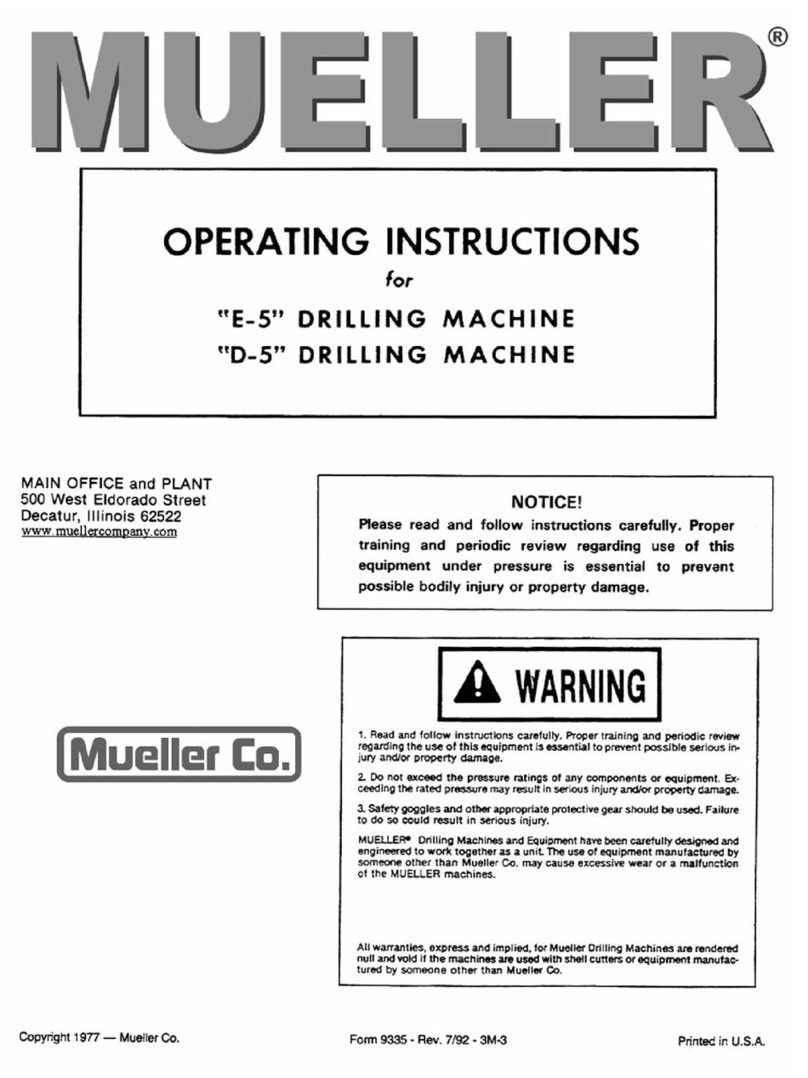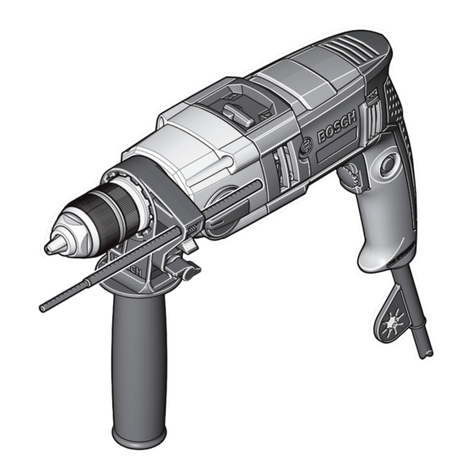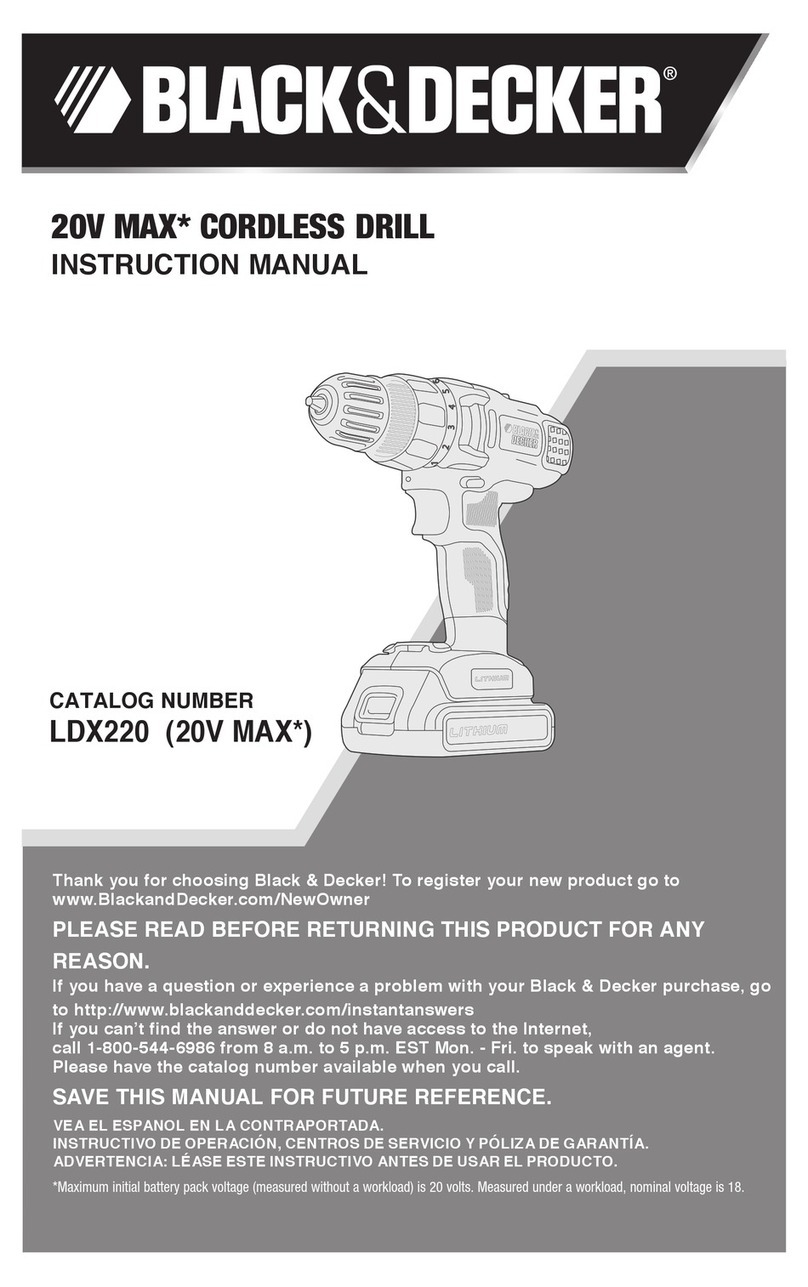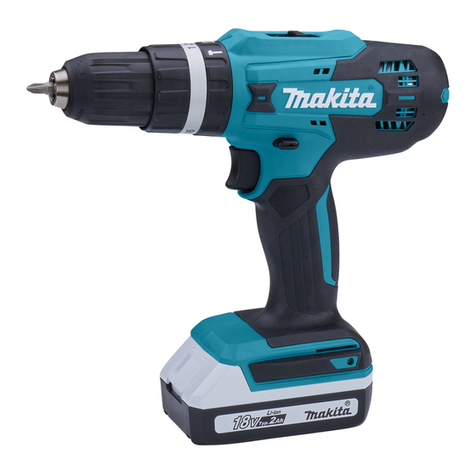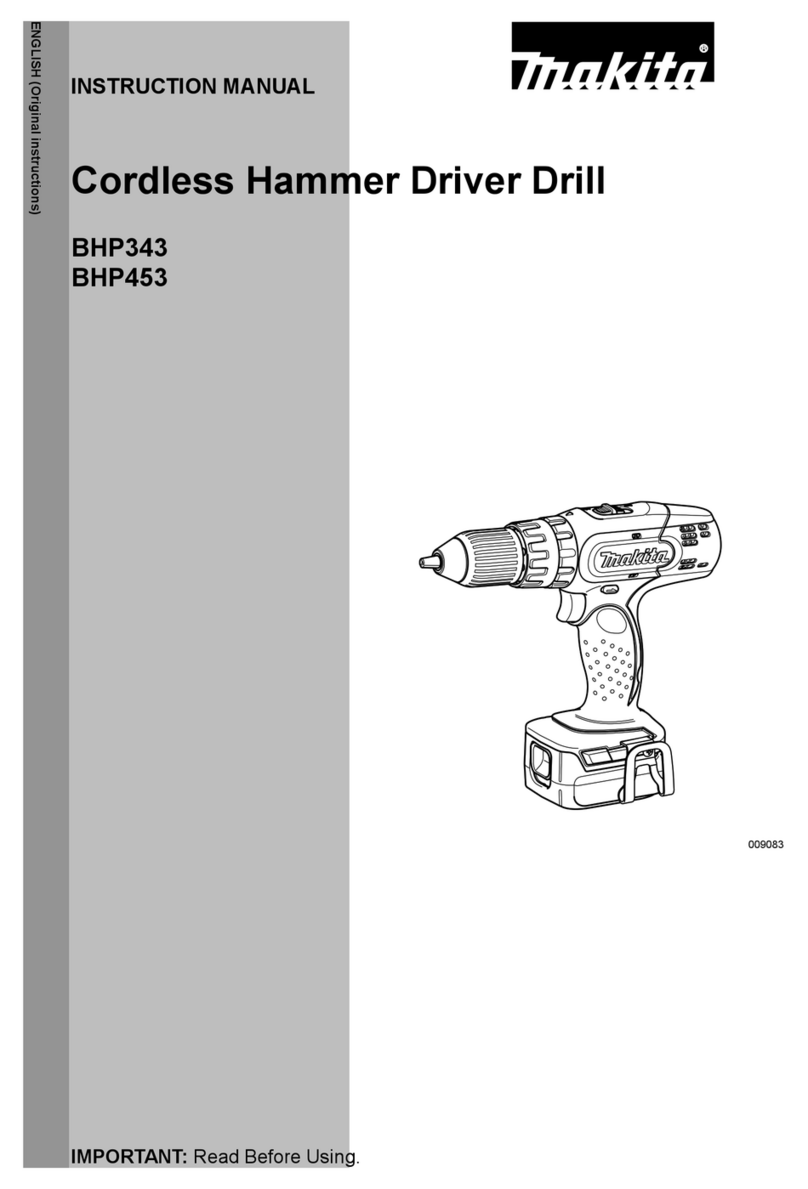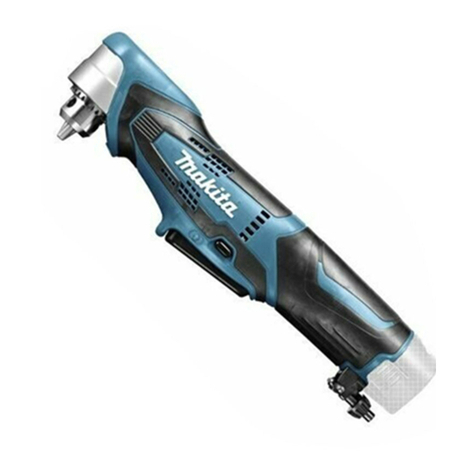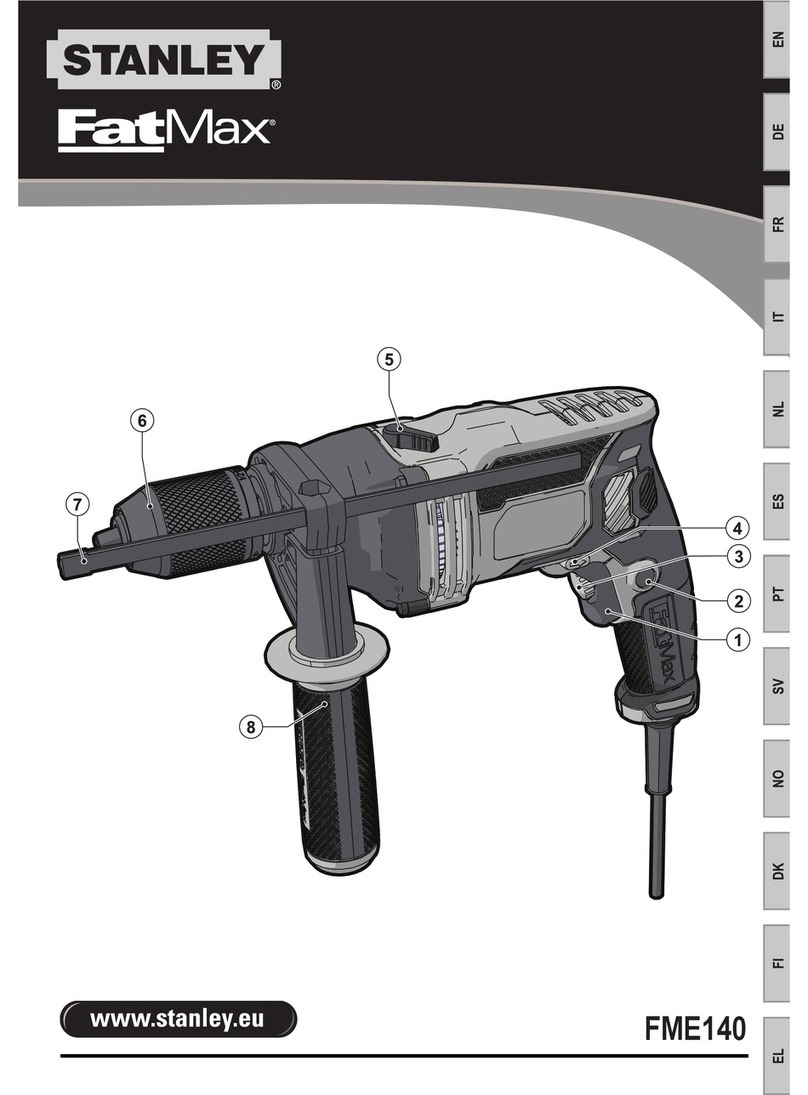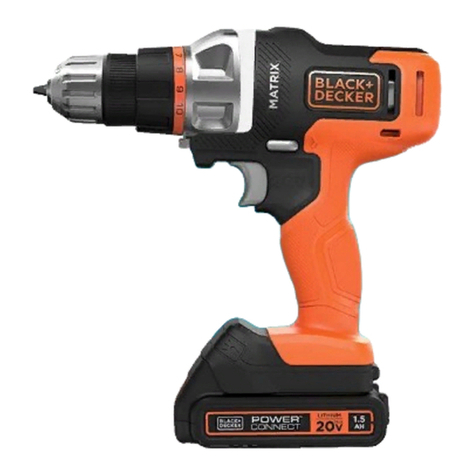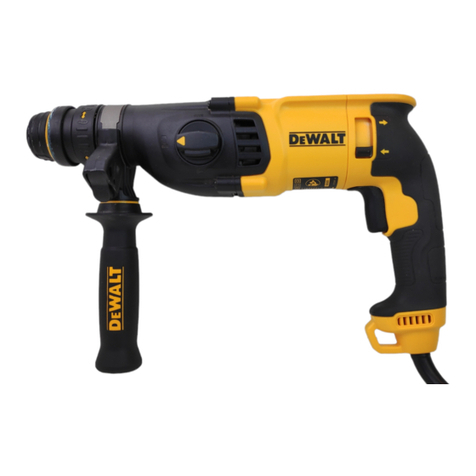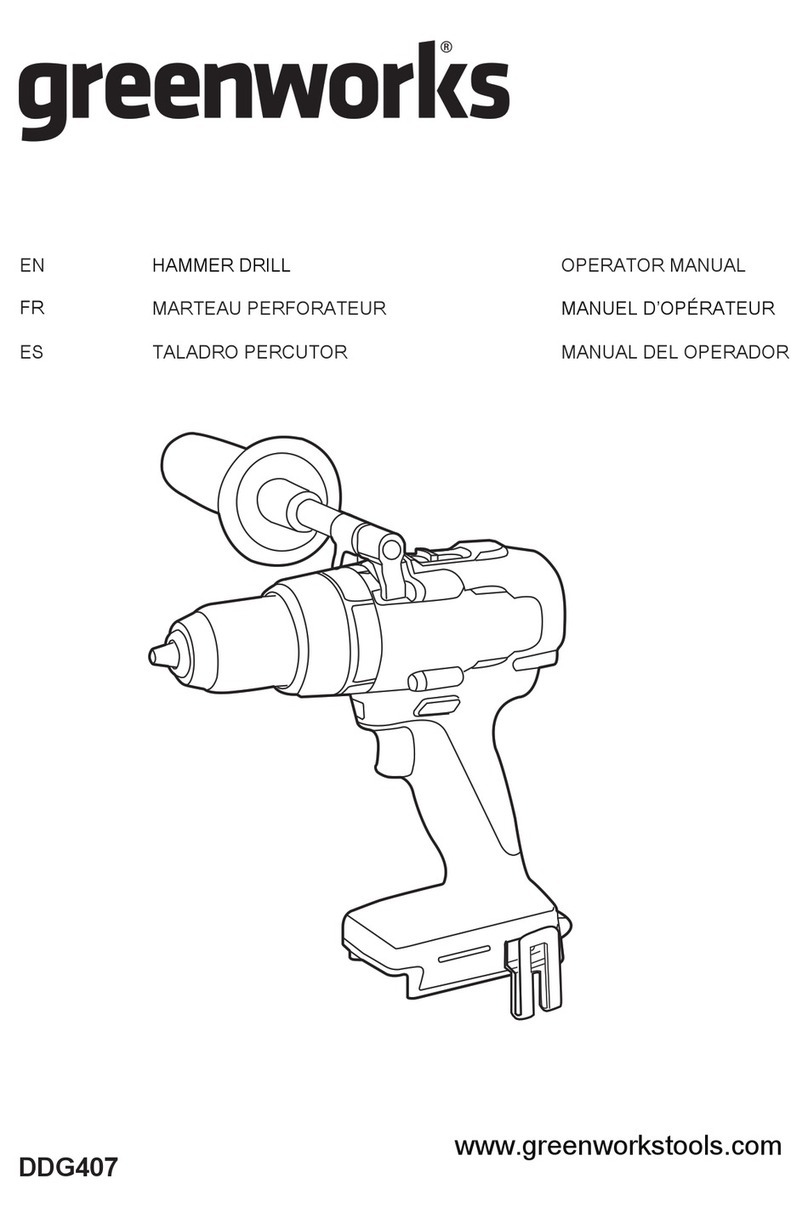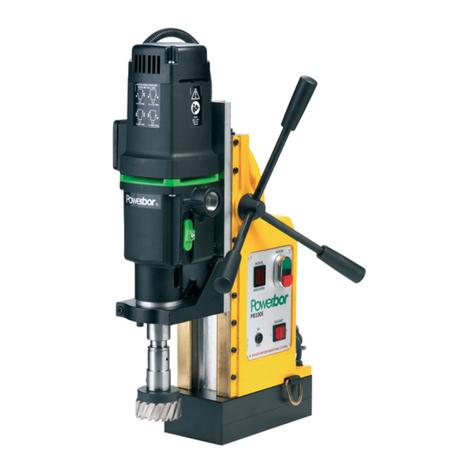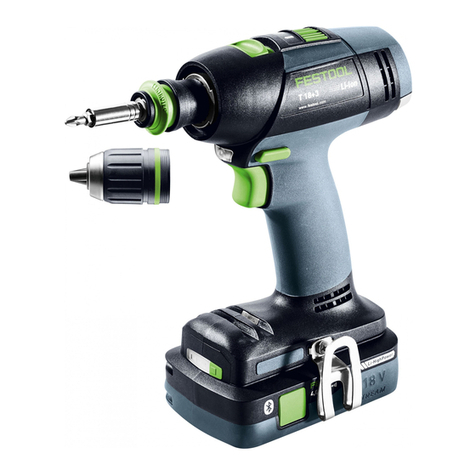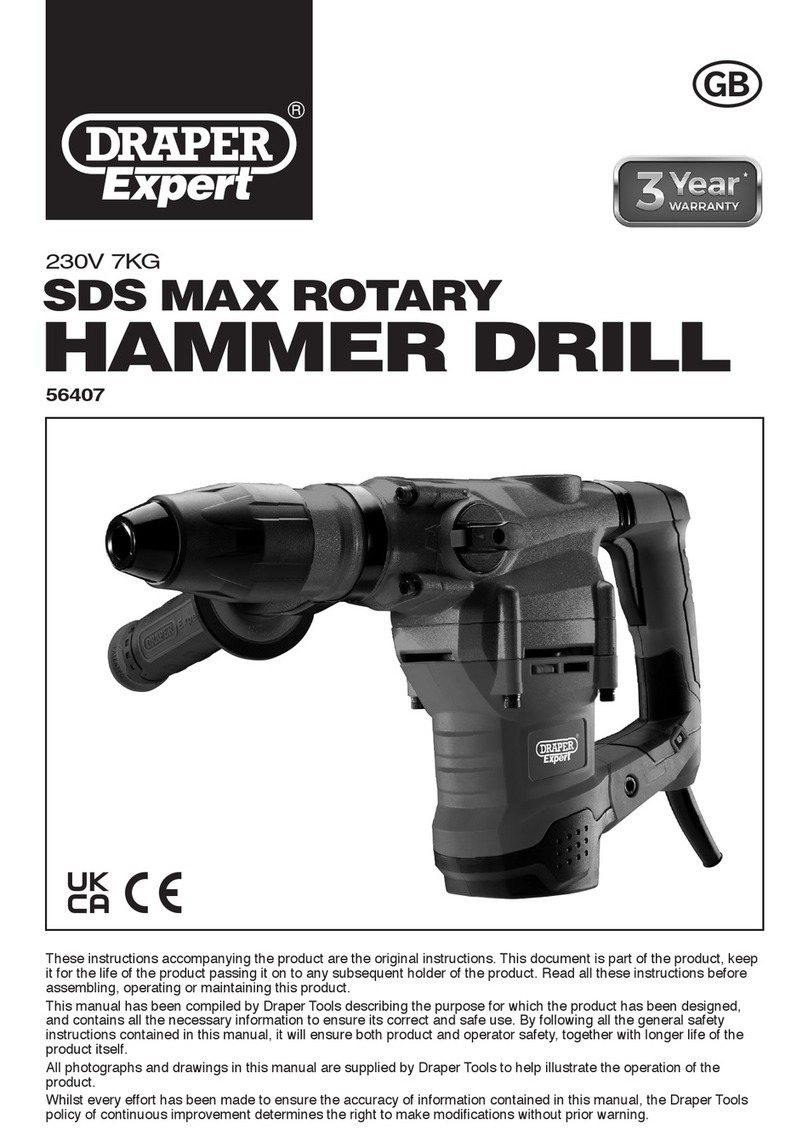
9ENGLISH
OPERATION
CAUTION: Always insert the battery cartridge
all the way until it locks in place. If you can see
theredpartontheuppersideofthebutton,itisnot
locked completely. Insert it fully until the red part can-
notbeseen.Ifnot,itmayaccidentallyfalloutofthe
tool,causinginjurytoyouorsomeonearoundyou.
CAUTION: When the speed comes down
extremely, reduce the load or stop the tool to
avoid the tool damage.
Holdthetoolrmlywithonehandonthegripandthe
otherhandonthebottomofthebatterycartridgeto
control the twisting action.
►Fig.12
Screwdriving operation
CAUTION: Adjust the adjusting ring to the
proper torque level for your work.
CAUTION: Make sure that the driver bit is
inserted straight in the screw head, or the screw
and/or driver bit may be damaged.
Placethepointofthedriverbitinthescrewheadand
apply pressure to the tool. Start the tool slowly and then
increase the speed gradually. Release the switch trigger
as soon as the clutch cuts in.
NOTE: When driving wood screw, pre-drill a pilot hole
2/3thediameterofthescrew.Itmakesdrivingeasier
and prevents splitting of the workpiece.
Drilling operation
First,turntheadjustingringsothatthepointerpointsto
the marking.Thenproceedasfollows.
Drilling in wood
Whendrillinginwood,thebestresultsareobtained
withwooddrillsequippedwithaguidescrew.Theguide
screwmakesdrillingeasierbypullingthedrillbitinto
the workpiece.
Drilling in metal
Topreventthedrillbitfromslippingwhenstartinga
hole, make an indentation with a center-punch and
hammeratthepointtobedrilled.Placethepointofthe
drillbitintheindentationandstartdrilling.
Useacuttinglubricantwhendrillingmetals.Theexcep-
tionsareironandbrasswhichshouldbedrilleddry.
CAUTION: Pressing excessively on the tool
will not speed up the drilling. In fact, this excessive
pressure will only serve to damage the tip of your drill
bit,decreasethetoolperformanceandshortenthe
service life of the tool.
CAUTION: Hold the tool rmly and exert care
when the drill bit begins to break through the
workpiece.Thereisatremendousforceexertedon
thetool/drillbitatthetimeofholebreakthrough.
CAUTION: A stuck drill bit can be removed
simply by setting the reversing switch to reverse
rotation in order to back out. However, the tool
may back out abruptly if you do not hold it rmly.
CAUTION: Always secure small workpieces in
a vise or similar hold-down device.
CAUTION: If the tool is operated continuously
until the battery cartridge has discharged, allow
the tool to rest for 15 minutes before proceeding
with a fresh battery.
MAINTENANCE
CAUTION: Always be sure that the tool is
switched off and the battery cartridge is removed
before attempting to perform inspection or
maintenance.
NOTICE: Never use gasoline, benzine, thinner,
alcohol or the like. Discoloration, deformation or
cracks may result.
Replacing carbon brushes
►Fig.13: 1. Limit mark
Checkthecarbonbrushesregularly.
Replace them when they wear down to the limit mark.
Keepthecarbonbrushescleanandfreetoslipinthe
holders.Bothcarbonbrushesshouldbereplacedatthe
sametime.Useonlyidenticalcarbonbrushes.
1. Use a screwdriver to remove two screws then
remove the rear cover.
►Fig.14: 1. Rear cover 2. Screw
2. Raise the arm part of the spring and then place
itintherecessedpartofthehousingwithaslottedbit
screwdriver of slender shaft or the like.
►Fig.15: 1.Recessedpart 2.Spring 3.Arm
3. Useplierstoremovethecarbonbrushcapsof
thecarbonbrushes.Takeouttheworncarbonbrushes,
insertthenewonesandreplacethecarbonbrushcaps
in reverse.
►Fig.16: 1.Carbonbrushcap
4. Make sure to place the lead wire in opposite side
of the arm.
►Fig.17: 1.Leadwire 2.Carbonbrushcap
5. Makesurethatthecarbonbrushcapshavetinto
theholesinbrushholderssecurely.
